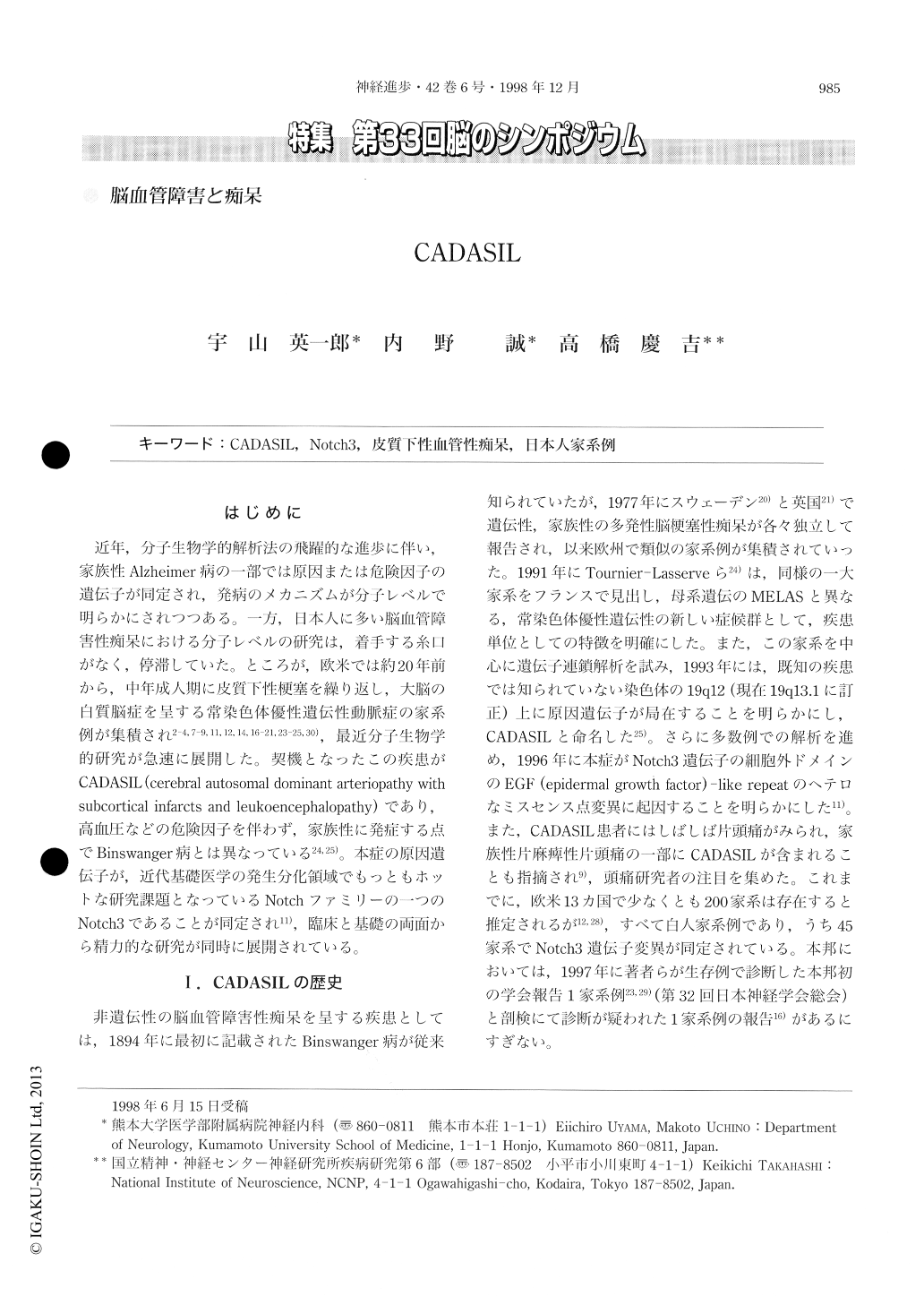- 有料閲覧
- 文献概要
- 1ページ目
はじめに
近年,分子生物学的解析法の飛躍的な進歩に伴い,家族性Alzheimer病の一部では原因または危険因子の遺伝子が同定され,発病のメカニズムが分子レベルで明らかにされつつある。一方,日本人に多い脳血管障害性痴呆における分子レベルの研究は,着手する糸口がなく,停滞していた。ところが,欧米では約20年前から,中年成人期に皮質下性梗塞を繰り返し,大脳の白質脳症を呈する常染色体優性遺伝性動脈症の家系例が集積され2-4,7-9,11,12,14,16-21,23-25,30),最近分子生物学的研究が急速に展開した。契機となったこの疾患がCADASIL(cerebral autosomal dominant arteriopathy withsubcortical infarcts and leukoencephalopathy)であり,高血圧などの危険因子を伴わず,家族性に発症する点でBinswanger病とは異なっている24,25)。本症の原因遺伝子が,近代基礎医学の発生分化領域でもっともホットな研究課題となっているNotchファミリーの一つのNotch3であることが同定され11),臨床と基礎の両面から精力的な研究が同時に展開されている。
There have been 200 affected families of cerebral autosomal dominant arteriopathy with subcortical infarcts and leukoencephalopathy (CADASIL), reported from various communities around the world, but all were white. To clarify the occurrence of CADASIL in Orientals, we performed clinicopathologic and genetic investigations for three Japanese families presenting as CADASIL in Kumamoto Prefecture of Southern Japan.
We identified the first Japanese family including three affected members (2 men, 1 woman, mean age 58 years) of CADASIL through two generations.

Copyright © 1998, Igaku-Shoin Ltd. All rights reserved.


